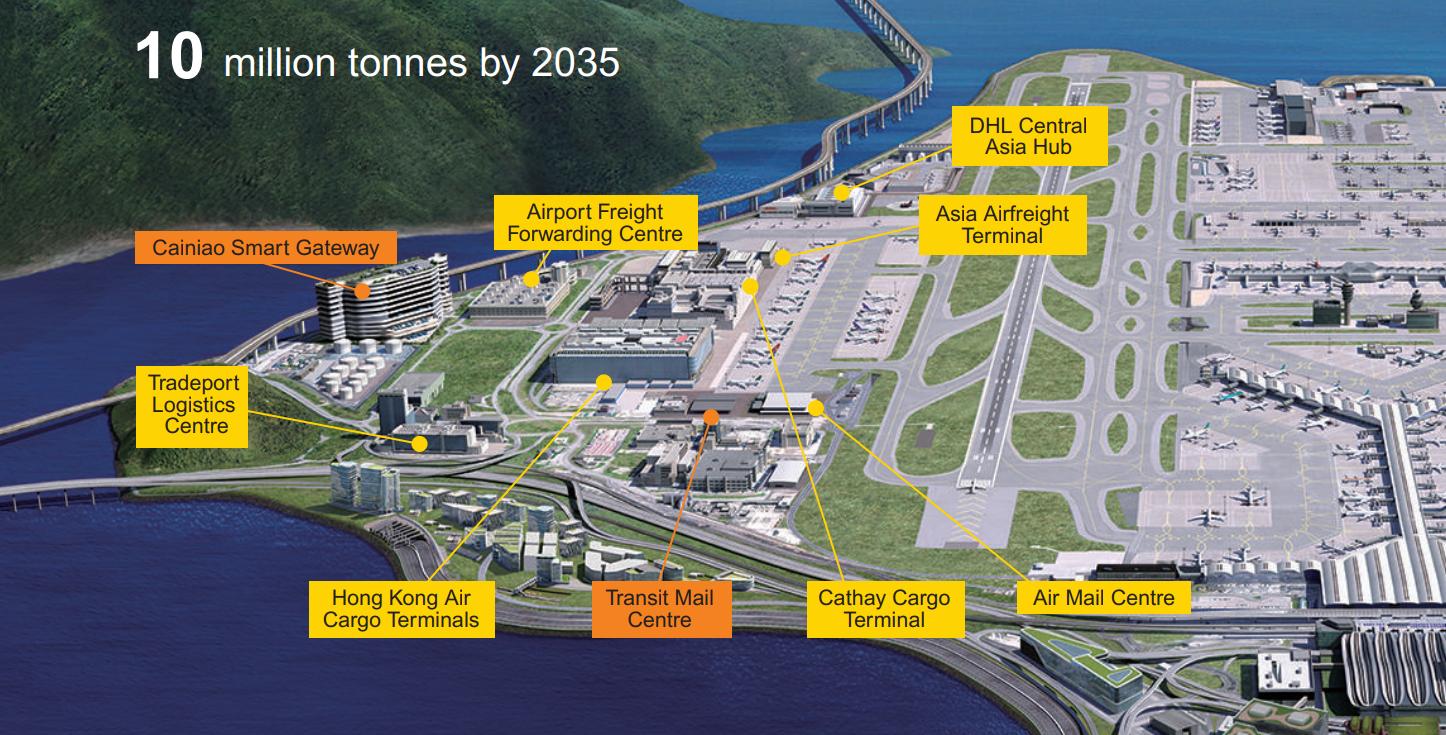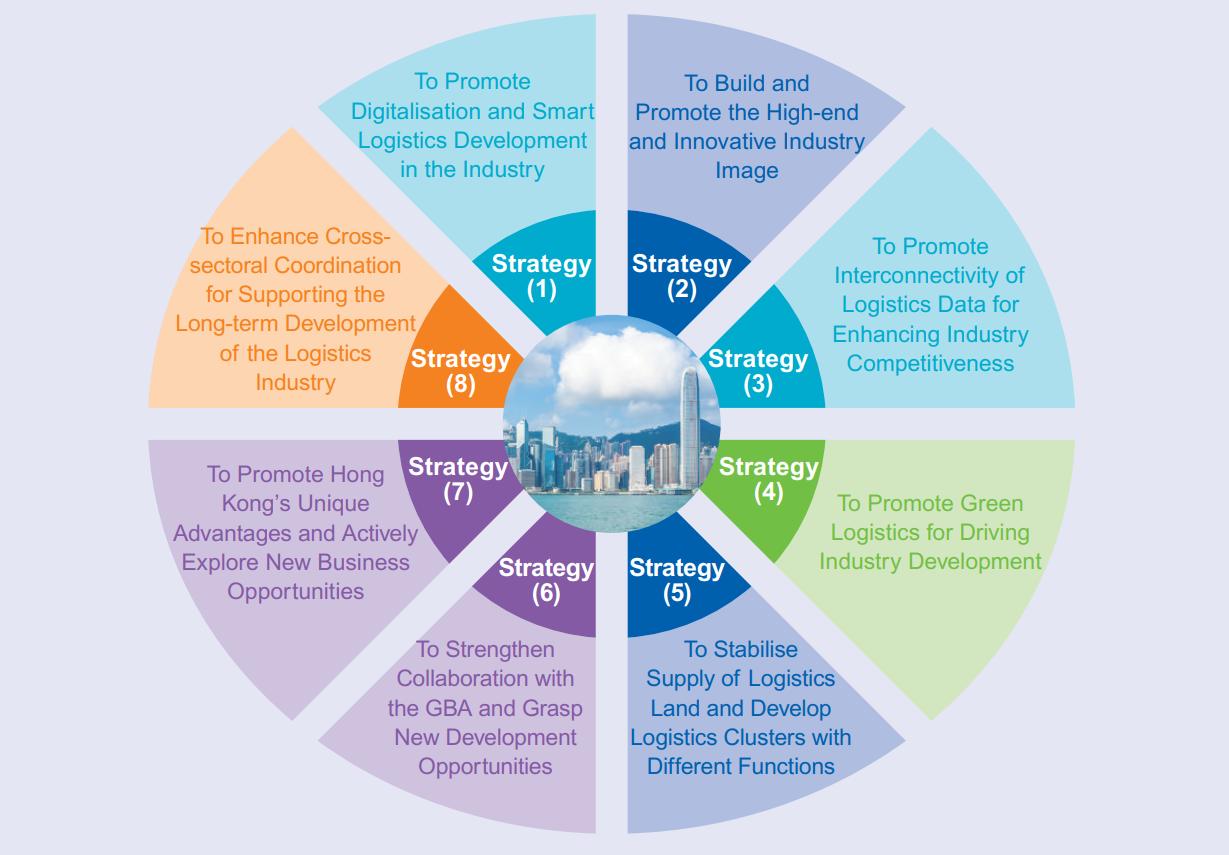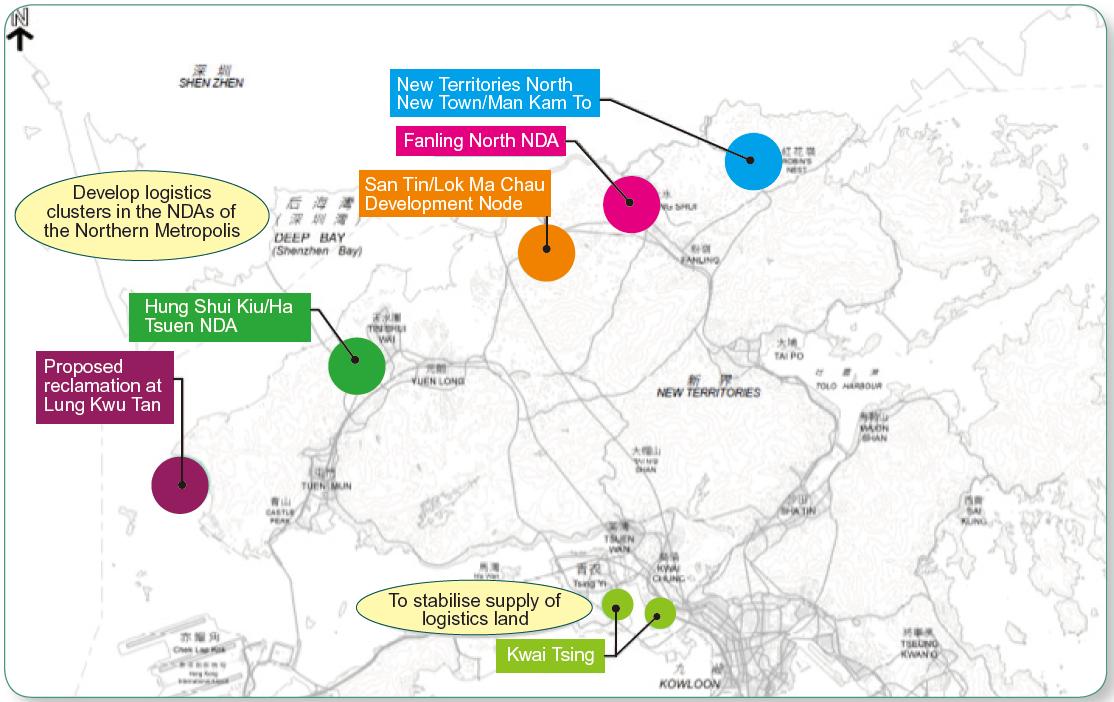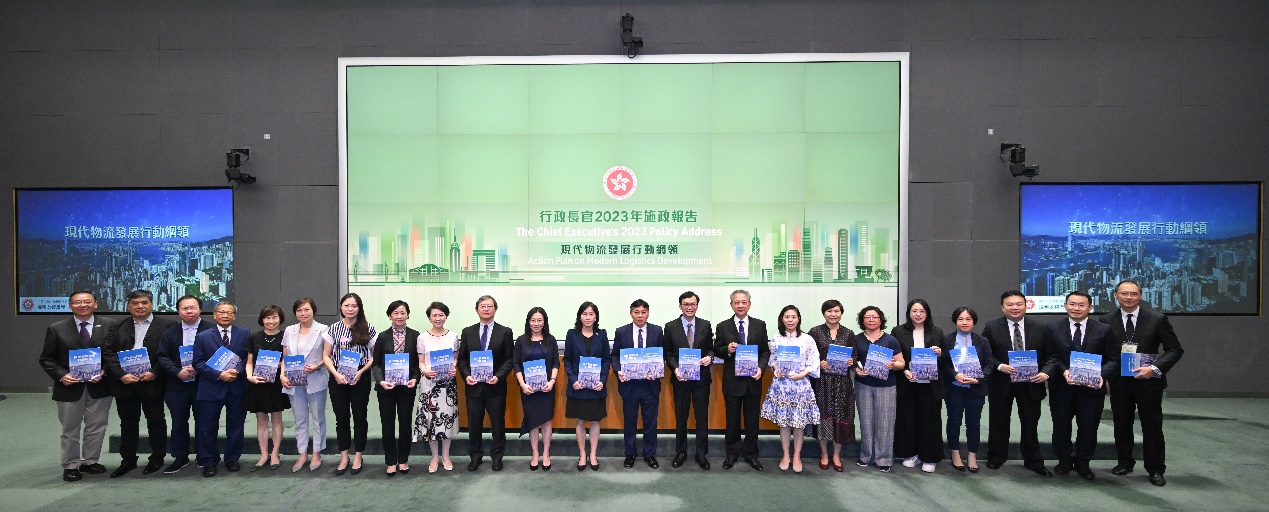


November 4, 2023
My colleagues and I have been briefing members of the public and the trade on the transport and logistics initiatives announced in the Chief Executive's 2023 Policy Address since two weeks ago. I take note that the community at large paid more attention to transportation infrastructure plans as they affect everyone's daily lives. These initiatives include the enhancement of the Three Railways and Three Major Roads proposals; the newly proposed two railways and one major road to support the development of new towns in the eastern part of the Northern Metropolis; and the smart and green mass transit in East Kowloon, Kai Tak and Hung Shui/ Ha Tsuen, among others.
I of course understand the public’s concerns on transportation development. Some of my friends even expressed to me their excitement about the proposed plans and they looked to their implementation. Transportation aside, it is also crucial to recognize that the development of logistics is equally important for the future of Hong Kong and its residents. Just on this Tuesday, we have announced the promulgation of the "Action Plan on Modern Logistics Development" (referred as the “Action Plan” below), which outlines a series of development strategies to meet the short, medium, and long-term needs of the logistics sector in Hong Kong. I would like this opportunity to share with you some highlights of the Action Plan.
Modern Logistics for e-commerce and high-value goods
With just a smartphone, you can now shop around the world. Perhaps you have already filled your shopping cart for the upcoming "Double 11" shopping festival. The surging demand for e-commerce has also led to an increased need for cross-border e-commerce logistics services. The international/cross-border e-commerce express services between the Mainland and international cities, as well as Hong Kong, Macao and Taiwan, witnessed year-on-year growth of 27.7% in 2020 and 14.6% in 2021.
Hong Kong has a solid foundation in transport and logistics facilities. The Hong Kong International Airport has extensive experience in handling high-end and high-value goods. It is certified by the International Air Transport Association for the handling of pharmaceutical cold chain, fresh produce, live animals, and lithium batteries transportation. New facilities are being completed recently for the development of air cargo logistics, including the express cargo terminal of DHL Express at the HKIA, and the premium logistics centre by a joint venture led by Cainiao Network. The nearby Transit Mail Centre is also expected to commence operations in 2025.

Air cargo facilities around the Hong Kong International Airport (Source: Airport Authority Hong Kong)
Our comprehensive sea, land, and air transportation network encompasses also the frequent and comprehensive liner shipping services, connecting to over 460 destinations worldwide every week through more than 240 international container liner services, and the land crossings to Mainland China, providing us with a competitive advantage in multimodal transport. Alongside our efficient customs clearance processes and various facilitation measures for commerce and trade, Hong Kong is well-positioned to become a sustainable international smart logistics hub, with a focus on high-value goods and the e-commerce markets.
Eight Strategies and 24 Recommended Actions
The logistics industry is however, highly susceptible to fluctuations in the external trade environment, requiring us to constantly adapt to external conditions and technological advancements.
Since last year, we have been working with the LOGSCOUCIL and the stakeholders to conduct a SWOT analysis for the logistics industry in Hong Kong. Based on this analysis, we have formulated eight strategies and 24 recommended actions, centered on the five directions, namely the "Smart Development”, “Modernisation”, “Green and Sustainability”, “Internationalization” and “Facilitation”, to address the short, medium, and long-term development needs of the logistics industry in Hong Kong.

Eight strategies for Hong Kong’s logistics development
Logistics Land and Logistics Cluster
The allocation of back-up and logistics sites has always been a focus of attention within the industry. It was also of key point of interest for the media during the press conference announcing the “Action Plan”.
As you may have noticed, we have earmarked 37 hectares of land in the Hung Shui Kiu/Ha Tsuen New Development Area as a pilot project to build a modern logistics cluster, serving as the gateway to the Greater Bay Area. In addition to the new development area, the “Action Plan” also mentions that we have already initiated planning studies for the disposal of a total of four parcels of logistics land, totaling about 19 hectares regularly from 2024 to 2027. We will also continue to promote vigorously the development of multi-storey logistics facilities that can accommodate both modern logistics and port logistics operations. This includes conducting feasibility studies on mixed-use development of multi-storey logistics facilities on potential land in Kwai Tsing District. We will also continue our study on the development of logistics clusters with different functions to provide sufficient logistics sites.

Hung Shui Kiu/Ha Tsuen New Development Area as a new location for the modern logistics Cluster
Towards Smart Logistics
In the past, goods delivery only involved buyers and sellers. Manufacturers and retailers later turn to second-party logistics (2PL) service providers for transportation and storage. With the globalization of trade, third-party logistics providers (3PL) have emerged as a global tread, offering customized logistics solutions to upper-tier customers. These providers offer functions such as quality control, inspection, product assembly, packaging, and shipment tracking etc.
To enable businesses to better manage real-time supply chain information and allocate resources more accurately, improving operational efficiency and reducing costs, the Airport Authority Hong Kong launched the "Hong Kong International Airport Cargo Data Platform" in 2021. This platform allows key stakeholders in the supply chain to communicate and exchange information on a unified platform, synchronizing and standardizing workflows. We have also been gradually establishing and pilot-testing the "Port Community System" this year to enhance operational efficiency at container terminals. The “Action Plan” proposes further interconnectivity of logistics data, and in 2024, we will initiate consultant studies to connect the airport, port and other relevant logistics information platforms. This will enhance the management and coordination of cargo flow, information flow, and capital flow, with the long-term goal of expanding connectivity with logistics systems in Mainland China and Macau.
Turning Challenges into Opportunities for Logistics Development
As a strategic document guiding the future development of the logistics industry in Hong Kong, the “Action Plan on Modern Logistics Development” not only provides strategic recommendations for land use and technological application, but also thoroughly examines the pulse of the logistics industry in Hong Kong. It covers various aspects, including enhancing the industry's image, attracting talent, strengthening the network with the Mainland, exploring business opportunities in the global arena, and even the enhancement of LOGSCOUNCIL’s functions. These strategies and recommendations provide us with clear directions to move forward despite the challenges we face in the global landscape.
Given the limited space in this blog post, I can only highlight some key points. I invite you all to take a good look at the “Action Plan” in full, which lays out the eight strategies and 24 recommended actions, and join us in exploring the unlimited potential for the development of the logistics industry in Hong Kong.

Members of LOGCOUCIL and I witnessed the promulgation of the “Action Plan on Modern Logistics Development”.
End